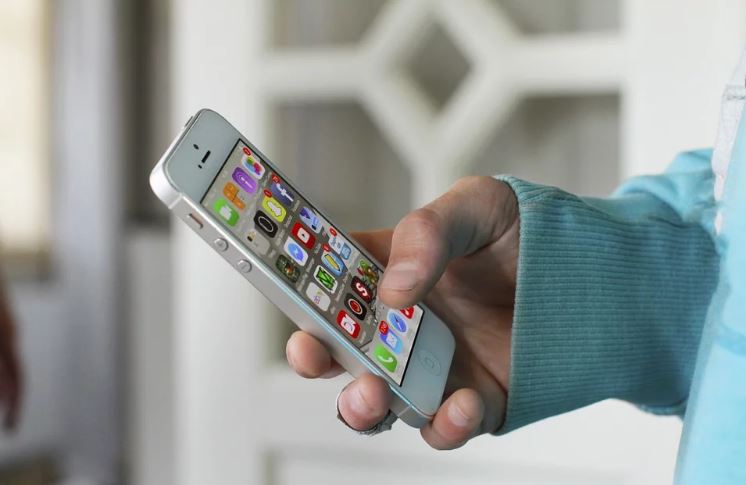Do you know that a phone can be a tool used to save and destroy life?
Millions of people and students around the world use a phone to learn, call, watch a video, text, chat, update, and check their social media, and surf the net.
This phone habit among students is both an advantage and a disadvantage. There is so much good a student can do with the phone that they are the envy of past generations. But also there is so much harm a phone can do to a student that will shape his life forever.
With school territories being cell phone friendly, the concern is raised whether schools should monitor student activity on their phones. Phones in schools are always controversial with most focusing on the good and bad of phones or cell phones in school pros and cons.
Here are the advantages (pros) and disadvantages (cons) of phones in schools for students.

The Pros of Cellphones in School
-
Used for Educational or Learning Purposes.
Cellphones are an amazing learning tool. There is a wide range of resources to check out from apps, videos, and sites dedicated to learning.
For example, if a math equation challenges a student. The student can take his cellphone and find out via online tools how it’s worked out. This can be done by checking out videos, communicating with other students via such tools as Slack and FaceTime.
Learning has been made easier; even if l face trouble with my coursework or schoolwork, I can order my papers online and get some SpeedyPaper promo codes. This is all possible because schools are becoming cellphone friendly.
-
Used for Research Purposes.
Before the internet and cellphone era, going to research a school topic from science to history involved carrying bundles of books. When a student is assigned to research a topic on a historical figure like Alexander the Great, the student can easily search the web with a cellphone.
-
Ease of Communication.
If a teacher or the school needed to relay information to students, the only way would be through an announcement or a notice board. With students having access to cellphones, it means that either announcements or alerts are sent to their phones.
If a teacher is giving an assignment, students can be forwarded the assignment to their chat groups. Also, students can have the opportunity to seek guidance or help from teachers without having to meet them personally. For example, teachers can create a class account either through Twitter or Facebook, where assignments can be sent and shared.
-
Learning Is Made Enjoyable.
Every student wants to pass and have good grades. But this can’t be possible if they despise what they are learning. This is where cellphones can come into play. Most students are happy on their phones, watching videos and chatting with friends.
If a teacher incorporates these online videos where they get to see topics like a reenactment of historical events, their curiosity is spiked. This curiosity will make the students want to find out more about that topic. Therefore, if learning can be made enjoyable by using a cellphone or technology, why not incorporate it into schools.
-
Enhance the Digital Literacy of Students.
If you are to be employed anywhere, knowing computers and digital media is important. A phone isn’t just calling and texting; it’s more of a mini-computer. Therefore, a student needs to be a digital literate if succeeding in the real world is possible.
For example, if an organization seeks a list of academic writers online, it will have to hire someone who knows how to research through the Internet. So this person has to be literate with the digital world and knows where to search to find reliable sources.
The Cons of Cellphones in School
-
Act as a Distraction.
The main purpose of the school is to learn and if the student isn’t learning there’s a problem. Reasons for a student not to learn can be the fact that there is a distraction.
Cellphones play a role in this distraction from student’s texting and making calls while in class. As a Pew Research Center study found out, “64% of students say that they have texted and 25% have made or taken a call in class. Also, 46% of students have played games from their phones and 23% have had access to social networks.”
Some schools have opted to confiscate students caught using their phones in class. Others have a rule that students shouldn’t access or use phones while the teacher or educator is in class. Such measures have had mild and mixed success but it’s mostly upon the student to respect and follow the rules.
-
A Great Cheating Tool.
Exams are for the educator to gauge whether students are progressing well or badly. But if students cheat and give an educator the confidence that they are all doing well, the teacher cannot act as the guidance students need.
With cellphone access, students have the tool to cheat. A student can find answers from the web and fellow students by just texting. But fortunately, teachers can enact rules that eliminate the bad habit by taking away the cheating tool. This can be done by requesting students to leave their phones in the lockers or creating a “cellphone jail.”
-
Limit Actual Social Interactions.
In school, students are encouraged to be social and interact with their peers. This means that there is face to face interaction and social media doesn’t count as an interaction. It’s no surprise to see students who don’t know the name of their classmates but know all their social media friends. If students don’t develop these social skills, school and society have failed to prepare them for the world.
-
Students Can Have Access to Inappropriate Content.
The Internet, from social media to YouTube, is prone to having content that children should not access. The Internet just like anything else has the good and the bad sides. It is upon the parents and teachers to make sure students don’t get the bad content which can include pornographic content or content encouraging violence against a certain group. Although there is a wide range of parental control features, it’s good to monitor what a student or child is watching and reading.
The education system is open to technology. It is upon the school, parents, and people of authority to work through the challenges to ensure a beneficial learning environment for students.



